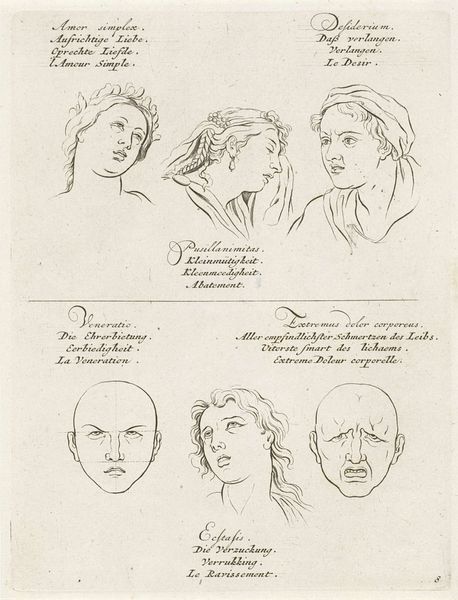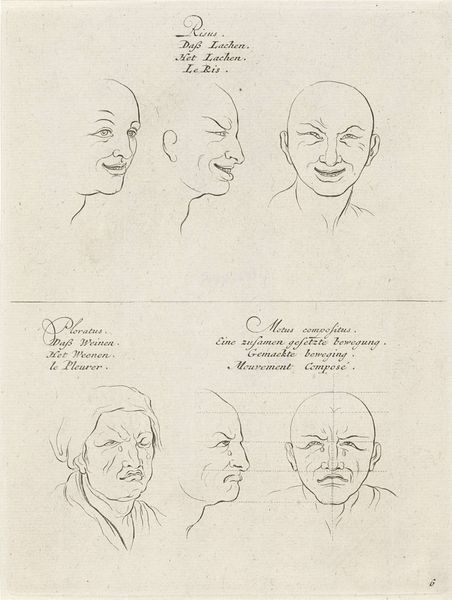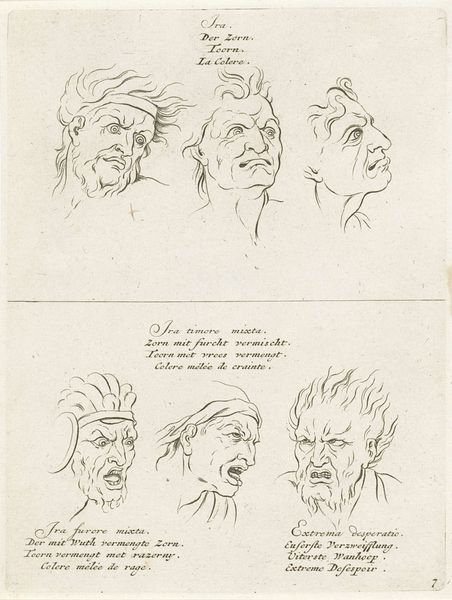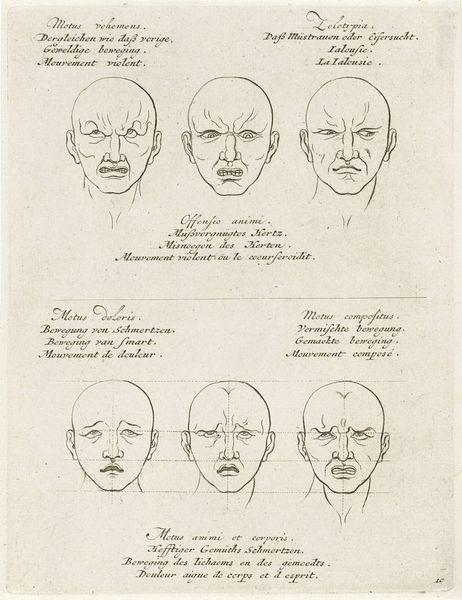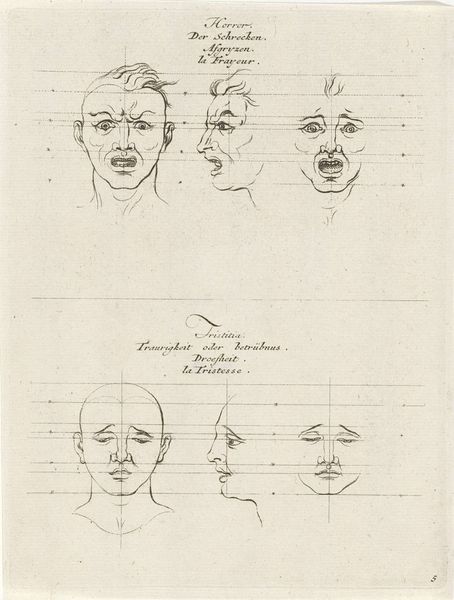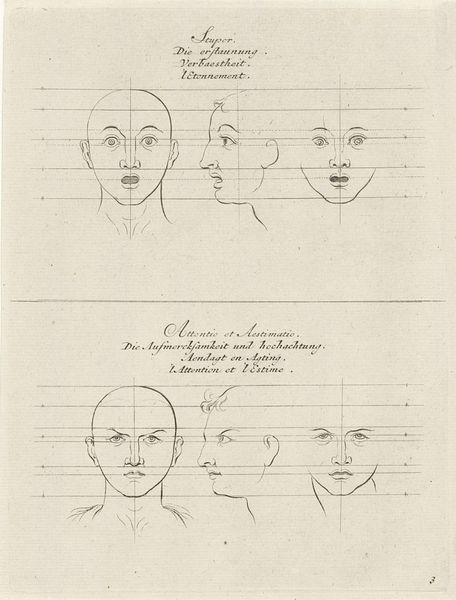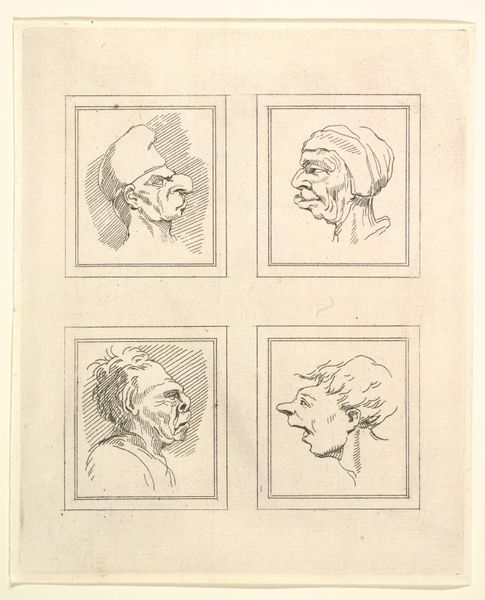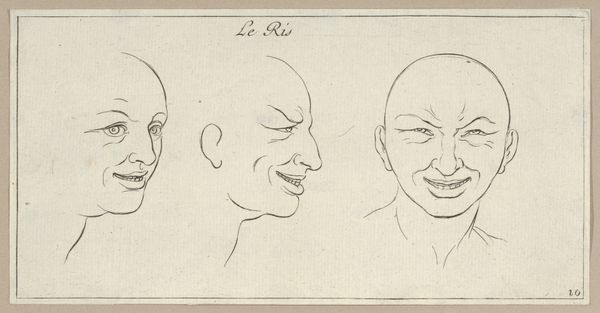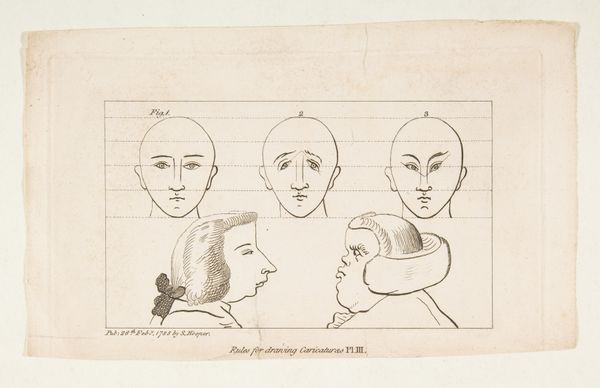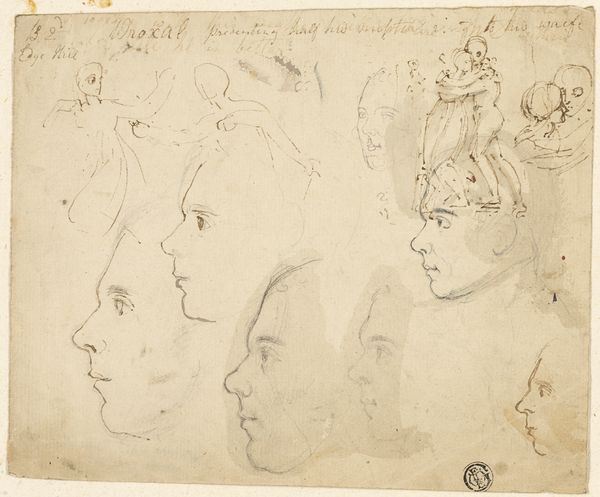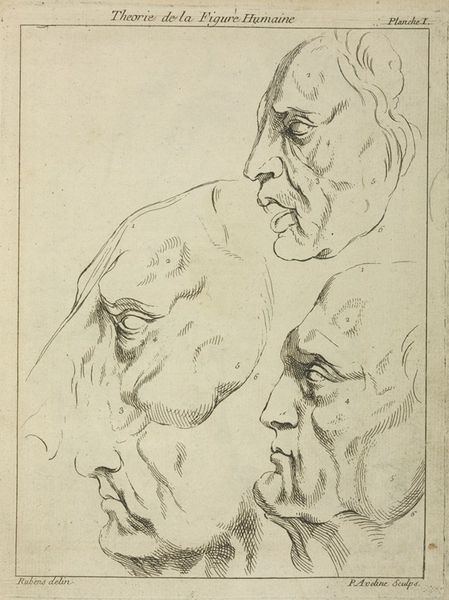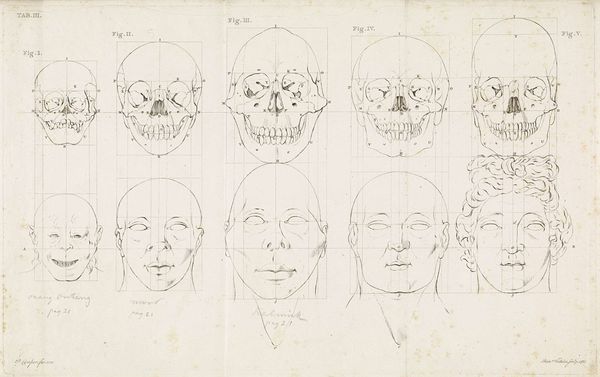
Gezichtsuitdrukkingen van vrees, verachting, schrik, verwondering, medelijden en geweldige beweging 1692 - 1711
0:00
0:00
pieterschenk
Rijksmuseum
drawing, print, engraving
#
portrait
#
drawing
#
comic strip sketch
#
imaginative character sketch
#
quirky sketch
# print
#
caricature
#
figuration
#
form
#
personal sketchbook
#
idea generation sketch
#
sketchwork
#
thumbnail sketching
#
orientalism
#
line
#
sketchbook drawing
#
history-painting
#
storyboard and sketchbook work
#
academic-art
#
sketchbook art
#
engraving
Dimensions: height 211 mm, width 160 mm
Copyright: Rijks Museum: Open Domain
Editor: This print, titled "Gezichtsuitdrukkingen van vrees, verachting, schrik, verwondering, medelijden en geweldige beweging," was created sometime between 1692 and 1711 by Pieter Schenk. The Rijksmuseum holds it. The collection of sketched faces is so compelling, even now! How do you see the cultural and material elements in this piece? Curator: I look at the work and see how the very process of making prints—the repeatable image, the accessibility of multiples—democratized the study of emotion. Before photography, how else did people access and dissect these expressions? Schenk wasn't just an artist; he was part of a system, producing a commodity. Consider the labour involved in engraving each plate, the cost of materials, and who could afford the final print. It's a study of emotional economies. Editor: So you're suggesting the creation of these prints made emotion more accessible? I’m fascinated by how those prints could become the language of conveying social status in a material way! Curator: Exactly! It's not just about high art or aesthetics; it's about accessibility, labor, and circulation. These prints entered the homes and lives of ordinary people. What does that tell us about the cultural consumption of emotion in that era? Look at the different languages used; what purpose do they serve? Who are these accessible to? Editor: It's multi-layered and complicated. It makes me question the motivations behind standardizing and classifying these emotions; was this an accessible way to broaden one’s understandings of the world? Curator: Precisely! It is more than just art; it is material culture in action. What new questions does this perspective raise for you about other works from the period? Editor: This really changed my understanding - thinking about accessibility makes me rethink about how artistic intention meets public consumption. Curator: Absolutely, it highlights how art becomes a vehicle for social interaction and understanding through materials and labour.
Comments
No comments
Be the first to comment and join the conversation on the ultimate creative platform.
